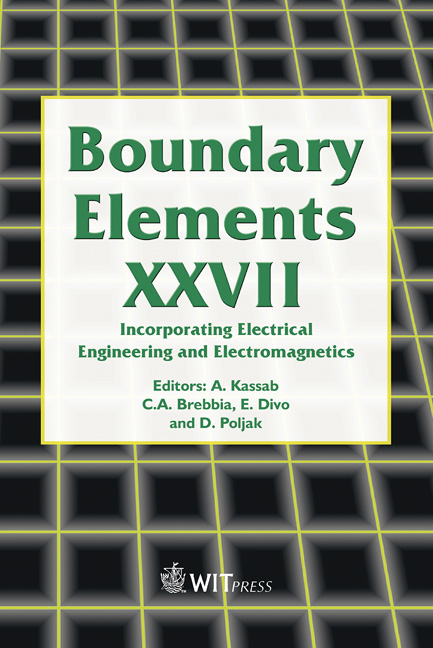Flow Analysis In A Water Reservoir Using A Combined Boundary Element And Weighted Finite Difference Method
Price
Free (open access)
Transaction
Volume
39
Pages
10
Published
2005
Size
338 kb
Paper DOI
10.2495/BE050401
Copyright
WIT Press
Author(s)
M. Kanoh, N. Nakamura & T. Kuroki
Abstract
In an earlier study, the boundary element method (BEM) and the weighted finite difference method (WFDM) were combined to analyze wave motion and water flow (Kanoh et al. [1]). In this paper, we determine the methodology of the combined method and apply it to the flow analysis in the water reservoir. In order to apply the combined method described in the problem, the analytical region is divided into two sub-domains: (1) The first is an upper-flow domain, in which the moving boundary technique and the intricate boundary conditions are managed by a BEM (Kanoh et al. [1]); (2) The second is a lower-flow domain, in which the WFDM provides an accurate solution for the delicate water motion, in the case where the concentration of dissolved oxygen (DO) is managed to kaizen or its value is enhanced using DO-supplying machines improved by our research group. With reference to the velocity vectors of the water flow and free-surface motion observed in a water reservoir, the effect and accuracy of the alternative hybrid method are evaluated. Keywords: combined method, flow in water reservoir, weighted finite difference method, observed velocity in water reservoir, temperature melalimnion. 1 Introduction In relatively deep-water reservoirs, a so-called temperature melalimnion is often observed in summer. Namely, along the melalimnion, the water temperature changes significantly, and, across the melalimnion, less water mixing occurs. Below the melalimnion, the water temperature remains relatively constant. Using
Keywords
combined method, flow in water reservoir, weighted finite difference method, observed velocity in water reservoir, temperature melalimnion





